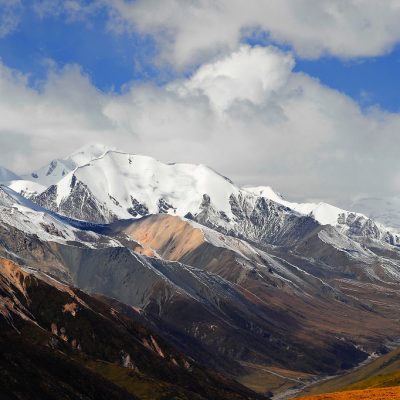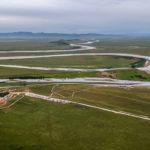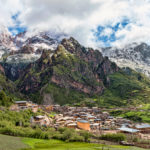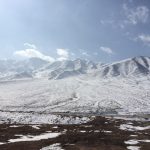How to Prepare for High Altitude
Elevated Trips is a tour operator on the Tibetan Plateau.
At Elevated Trips our views are elevated but so is our experience and professional care in the mountains.
One thing that defines our business as “Elevated” are our high quality trips to high altitude environments.
People ask me all the time, “Is traveling at high altitude safe?”
My answer is: Yes! If you acclimate slowly (which we do on our trips) and do everything you need to adequately prepare before hand.
If you are traveling above 3,000 meters or 10,000 feet in elevation it is important to be informed about he risks of altitude. Take a few minutes and watch this movie on how to prepare for high altitude and keep yourself healthy in the wilderness.
This vlog will help you be ready for your ascent to the high places. But specifically we address how to prepare for high altitude when visiting Tibet, Nepal, and the Himalayas.
Here are some trips where you can safely experience the wonders of high altitude in Tibet…
Lhasa to Everest Base Camp
See the Lhasa’s Jokhang Temple and the Potala Palace then drive to Tibet’s Everest Base Camp here
Trekking Mount Kailash
See the epic itinerary to trek around Tibet’s holiest mountain here
Trekking in Yushu and Nangchen
Trek the wilds of Qinghai Province on the Tibetan Plateau with us here
Introduction
Here are some tips from an article by Dr. Paul Anderson, an expert on high altitude medicine, on how to travel well in altitude and what to do if you should encounter mild to severe altitude sickness…
First off: What is High Altitude? And What elevations are we actually talking about?
High Altitude – (1500m-3500m/ 4921-11,483 ft) – this is where most of our Elevated Trips adventures go, with the exceptions to some trips to Everest Base Camp region
Very High Altitude – (3500m-5500m/ 11,483 – 18,045)
Extreme Altitude – (>5500m/ >18,045ft)
Preparing for Safe Travel to High Altitude
By Paul Anderson, M.D. Co-investigator – ASAP study
Millions of people travel to high-altitude every year for recreation and for work. Twenty percent of those traveling to altitudes below 5500 m/18,000 ft are affected by some form of altitude illness. This number rises to fifty percent above 18,000 ft. While most cases of altitude illness are mild and self limiting, some cases can become life threatening. If you are planning a trip to altitudes above 1500 m/5000 ft. knowledge is the best prevention for altitude illness. This brief outline serves as merely an introduction to this important topic. Additional resources available at the end of this page (or links provided elsewhere in this website) are highly recommended reading for those traveling to high altitude.
Altitude Related Illnesses
High Altitude Illnesses (HAI) include Acute Mountain Sickness (AMS), High-Altitude Pulmonary Edema (HAPE), and High-Altitude Cerebral Edema (HACE). The symptoms of AMS are typically felt by most people when they arrive at a new altitude, but the symptoms are usually self limiting (e.g. 1st 3-5 days at high altitude). The exact mechanisms of AMS remain unclear, however symptoms tend to be the most prevalent 1-2 days after arrival at elevation.
The most common symptoms include a headache, gastrointestinal upset, feelings of fatigue, dizziness, and sleep disruption. The more life threatening condition of HAPE includes symptoms of shortness of breath at rest, persistent coughing, exercise intolerance, and possibly the production of pink frothy sputum. HACE is defined as the presence of AMS symptoms with difficulty walking (ataxia), mental status changes, or severe lethargy. If you notice any of these symptoms in yourself or a member of your group, it is critical to stop and evaluate your situation. Descent is usually the first priority when altitude illness occurs.
What General Health Precautions should I take before traveling to High Altitude?
During decades of research, altitude physiologists have identified fairly reliable prevention strategies for avoiding altitude illnesses. However, individuals who perform well on one outing at a given altitude may become ill on another venture to a similar climate. If you are planning to travel to High Altitude there are certainly some general health precautions that will reduce your chances of experiencing a high-altitude syndrome like AMS, HAPE, or HACE.
Get Organized—Plan your trip itinerary to allow for proper ascent schedules. If you are planning a vacation (e.g. skiing or trekking), allow for an extra day or two during the trip so that members of your group can adjust to the effect of new altitudes. For those planning strenuous alpine ascents, remember that difficult terrain can frustrate attempts to adhere to ascent schedules and terrain and weather can severely limit evacuation options. These factors must be included in your plan. Again, descent forms the primary treatment for most altitude illness, so consider egress routes when planning more challenging ascents. Regardless of your location, give some consideration to what you will do if you or a member of your party becomes ill from altitude.
Get Fit—Being physically fit is not regarded as a preventative factor by most experts in altitude physiology. Even the most highly trained athletes suffer the effects of altitude illness. Nevertheless, if you are physically fit you stand a better chance of being more resilient in the midst of any illness. If you are required to participate in your own rescue or the evacuation of another team member, you will likely be much more effective if you are in excellent physical shape.
Get Checked Out— A visit to a medical provider familiar with the demands of altitude travel is helpful before your trip, especially if you have ongoing medical conditions. You should address any acute medical issues such as sinus infections, bronchitis, or chest pain with your doctor before you leave on your trip. Individuals with Heart and Lung disease should be examined carefully as altitude places tremendous strain on the cardiovascular system. Sleep disorders can also pose significant problems at altitude since sleep is significantly disrupted during the acclimatization process. Musculoskeletal conditions can also present problems for traveling efficiently and performing effectively at altitude. A clinician who knows your health conditions and understands the demands of altitude can help you prepare for your trip. Medications useful to you at altitude as well as immunizations for travel to remote areas can also be provided at your pre-trip visit.
Get Hydrated—Dehydration decreases the body’s ability to acclimatize to high altitude. Unfortunately many travelers arrive at their destination dehydrated after long plane-flights, bus trips, or automobile journeys. Excessive caffeine and alcohol ingestion are common during travel and produce a general state of low blood volume. Even before your trip begins, drinking 2-3 liters of water per day can prepare your body for arrival at higher elevations. Keep a 1 liter water bottle with you when traveling and drink as regularly as is feasible, given your mode of transportation. Reducing caffeine and alcohol consumption before your trip will also decrease your chances of arriving at altitude in a dehydrated state.
Get Medications—You should be sure to have an adequate supply of your regular medications when you begin your trip. While most travelers choose to acclimatize to altitude naturally, many people choose to take prescription medications that help the body adjust to high altitudes, such as acetazolamide (Diamox) and dexamethasone. Others suggest supplements such as gingko balboa may be helpful. The specific benefits of these medications/supplements and their side effects are discussed below. Altitude medications are more highly recommended for rapid travel (i.e. by plane) to very high altitude (3500m-5500m/ 11,483 – 18,045 ft) and may not be required for travel to lower elevations.
Get Rested—Domestic and international travel itineraries often disrupt normal sleep schedules and generate feelings of fatigue. Arriving tired and dehydrated at altitude creates room for altitude illness to develop if travelers immediately begin high-exertion activities such as skiing, hiking or climbing. Many travelers find medications such as Zolpidem (Ambien) helpful if they struggle to sleep while traveling to the start of their trip. Alternatively, plan a rest day or two once you arrive at your destination
Get Educated—The best treatment for altitude illnesses is to avoid getting sick in the first place. While there is no flawless way to prevent altitude sickness, most experts agree that knowledgeable travelers are less likely to experience serious conditions such as HAPE and HACE. You should know the symptoms, ascent guidelines, and treatment methods for altitude illnesses. You can also carry with you small books on mountain first aid that have excellent sections on altitude illnesses. Most individuals who have problems at altitude either lack basic knowledge about high-altitude regions, ignore/rationalize away obvious symptoms, or fail to provide the proper treatments for party members who become ill.
What Medications are Effective in Preventing High Altitude Illnesses?
Prevention: Recent consensus statements on the strength of evidence for various preventive medications are available through the internet. Please see the link below for excellent references and one recent summary article. What follows is a summary drawn from this helpful consensus article.
For further detailed reading, health related professionals may wish to investigate this Canadian report
http://www.phac-aspc.gc.ca/publicat/ccdr-rmtc/07pdf/acs33-05.pdf
1. Acetazolamide:
Fairly effective in preventing many cases of altitude illness. The indications for using Acetazolamide include a) rapid ascent to sleeping elevations > 3000 m, b) significant gains in elevation during an expedition (e.g. moving from 4000 m to 5000 m, and c) previous difficulty during travel to high altitude. Acetazolamide has side effects that many find unpleasant causing some travelers to avoid this medication. Consult with your prescribing physician before taking this medication.
2. Dexamethazone:
(Steroid/Anti-inflammatory)
Dexamethazone has been shown to be effective in preventing altitude illness in many individuals. Some will take it in conjunction with Acetazolamide, or alone. Consensus statements indicate that this medication should be reserved for individuals who cannot tolerate Acetazolamide.
3. Other medications:
(Diuretic)
Methazolamide, Spironolactone, Nifedipine (useful in treating HAPE, not in preventing AMS) and Sildenafil all seem to have some beneficial effect in some altitude travelers, but scientific research has yet to affirm them as strongly as Acetazolamide and dexamethazone.
Are there any natural supplements that help prevent Altitude Illness?
Gingko Bilboa has been shown to improve circulation and reduce blood pressure in a similar way to Sildenafil (Viagra). Studies have not demonstrated that Gingko is any better than placebo, but some individuals still find this a helpful herbal agent in preventing altitude illness
Other recommendations include high doses of Vitamin C and other anti-oxidant agents which may help reduce the circulating volume of free radicals during acclimatization. Scientific evidence for these interventions is somewhat limited, yet these vitamins may function as excellent support for the irregular diet and lifestyle produced by many travel itineraries.
Some substances controlled in the United States may alleviate the symptoms of altitude illness. Coca leaves (coca de mate) are commonly used to make tea or are chewed directly by many high altitude workers and travelers in Central and South America. These remedies are consumed at the travelers own risk.
One fine summary of herbal remedies exists at:
http://www.denvernaturopathic.com/news/altitude.html
What Guidelines Exist for Safe Travel in High Altitude Regions?
Group Travel: Traveling with a group is an excellent way to reduce the likelihood of altitude illness. Solo travelers may have a more difficult time recognizing AMS symptoms in themselves and may be more likely to rationalize away their symptoms in order to reach a goal. The use of a buddy system (each member of your group has a buddy to watch them throughout the day) is very effective in recognizing AMS symptoms early. While groups increase the number of people who can potentially become ill, they probably decrease the likelihood that serious illness will occur.
Gradual Initial Exposure: Graded ascent to high altitude is preferred over rapid exposure to high altitude. For example, trekking to elevations over 3500 m over a number of days decreases your risk of AMS when compared with flying to the same elevation. Ascend to altitude slowly when possible. If you are rapidly exposed to altitudes > 3500 m (e.g. LaPaz, Bolivia) consider taking Acetazolamide according to accepted therapeutic regimens. Once you arrive at 3500 m, you should take 2-3 days to rest and allow your body to adjust to the new altitude. This involves non-strenuous activities like walking, touring the local town, or sightseeing.
See the linked YouTube video for more on these acclimatization schedules.
Ongoing Exposure: One of the best ways to prepare for high altitude is to climb high and sleep low. After 2-3 days spent at altitudes around 3500 m, travelers should increase their sleeping elevation no more than 600 m per day. Gaining more elevation during the day is acceptable so long as overexertion is avoided and the sleeping elevation does not exceed 600m. In addition, an extra night of acclimatization is recommended every 300-900m gain in sleeping elevation. As noted, terrain may frustrate adherence to these schedules, but groups must make their best attempts to approximate these guidelines. (excellent)
What Should I do if someone gets Altitude Illness?
Most healthy people will sustain some mild measure of altitude illness on arrival at altitude, such as a headache, problems sleeping, mild shortness of breath, or fatigue. If these symptoms fail to resolve with a rest day, hydration, and over the counter medications, your group must pay attention, and perhaps initiate treatment.
Treating severe AMS (Acute Mountain Sickness)
1. Discontinue ascent and rest.
2. Acetazolamide 125 mg by mouth every 12 hours until symptom free
3. Dexamethasone 4 mg by mouth every 4-6 hours for two doses. Do not continue ascent until after 18 hours after the last dose and symptom free. This can be used by itself or with Acetazolamide.
4. Give Oxygen, if supplemental oxygen is available.
5. Descend if symptoms persist more than 24-48 hours or if the patient’s condition worsens.
Treating HAPE (High-Altitude Pulmonary Edema)
1. IMMEDIATE descent (almost always with assistance) is imperative, and should not be delayed unless descent poses a greater danger to the parties involved (i.e. weather, terrain). Even modest elevation losses can be helpful.
2. In addition to descent, administration of dexamethasone 8 mg IM/PO loading dose followed by 4 mg IM/PO Q 6 hours should be given immediately.
3. Acetazolamide 125 mg PO TID should be given if patient able to tolerate PO. Oxygen supplementation should be given if available.
4. If descent is not possible, place patient in a portable hyperbaric chamber for 4-6 hours. (also called a Gamow bag)
5. Recovery likely to be prolonged with after effects (ataxia) lasting up to weeks. Most who survive evently fully recover neurologically.
Treating HACE (High-Altitude Cerebral Edema)
1. IMMEDIATE descent is imperative (likely with assistance as exertion will worsen symptoms). 500-1000 meters may be all that is required before improvement is observed.
2. Supplemental oxygen.
3. Rest after descent.
4. Nifedipine 20 mg PO followed by 10 mg PO Q 4 hours. If the patient is unable to tolerate PO, empty capsule sublingually.
5. If descent is not possible, place the patient in a portable hyperbaric chamber.
6. Neither supplemental oxygen, hyperbaric therapy, nor any other intervention should delay an opportunity to descend.
7. Both furosemide and acetazolamide can be modestly helpful in improving oxygenation.
Conclusion
Many of the world’s most fascinating environments exist at high elevations. Whether you plan a leisurely visit or an aggressive wilderness expedition, altitude illness must be a factor in your trip planning. This brief article is merely an introduction to the basic knowledge you will need to recognize and respond correctly to high-altitude illnesses. Remember, most altitude illness is mild and self-limiting, so be prepared for some discomfort and be prepared to recognize when your group members display signs of more serious illness.
Your feed back is much appreciated!
Please also see this BBC article on how to prepare for high altitude.







